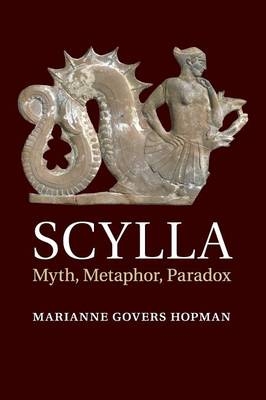
Scylla
Myth, Metaphor, Paradox
Seiten
2016
Cambridge University Press (Verlag)
978-1-107-60851-1 (ISBN)
Cambridge University Press (Verlag)
978-1-107-60851-1 (ISBN)
This book uses the example of a famous sea-monster from Greek myth to challenge the view that a mythical name denotes a single clear-cut 'figure' and to demonstrate how the same symbol can express a range of anxieties. Of interest to students and scholars working in classics, mythology and gender studies.
What's in a name? Using the example of a famous monster from Greek myth, this book challenges the dominant view that a mythical symbol denotes a single, clear-cut 'figure' and proposes instead to define the name 'Scylla' as a combination of three concepts - sea, dog and woman - whose articulation changes over time. While archaic and classical Greek versions usually emphasize the metaphorical coherence of Scylla's components, the name is increasingly treated as a well-defined but also paradoxical construct from the late fourth century BCE onward. Proceeding through detailed analyses of Greek and Roman texts and images, Professor Hopman shows how the same name can variously express anxieties about the sea, dogs, aggressive women and shy maidens, thus offering an empirical response to the semiotic puzzle raised by non-referential proper names.
What's in a name? Using the example of a famous monster from Greek myth, this book challenges the dominant view that a mythical symbol denotes a single, clear-cut 'figure' and proposes instead to define the name 'Scylla' as a combination of three concepts - sea, dog and woman - whose articulation changes over time. While archaic and classical Greek versions usually emphasize the metaphorical coherence of Scylla's components, the name is increasingly treated as a well-defined but also paradoxical construct from the late fourth century BCE onward. Proceeding through detailed analyses of Greek and Roman texts and images, Professor Hopman shows how the same name can variously express anxieties about the sea, dogs, aggressive women and shy maidens, thus offering an empirical response to the semiotic puzzle raised by non-referential proper names.
Marianne Govers Hopman is Assistant Professor of Classics and Comparative Literary Studies at Northwestern University, Illinois.
Introduction; Part I. Scylla in the Odyssey: 1. The impregnable monster; 2. A poetic hazard; 3. The gullet of the sea; 4. Puzzles and riddles; Part II. Scylla in Classical Greece: 5. A feminine composite; 6. Scylla as Femme Fatale; 7. The untamed maiden; Part III. Scylla in Hellenistic Greece and Rome: 8. Rationalizing the monster; 9. Organizing the tradition; 10. Roman versions of a Greek myth; 11. Psychology and re-semanticization in Ovid's Metamorphoses; Epilogue.
| Erscheinungsdatum | 29.06.2016 |
|---|---|
| Zusatzinfo | 25 Halftones, black and white; 3 Line drawings, black and white |
| Verlagsort | Cambridge |
| Sprache | englisch |
| Maße | 152 x 229 mm |
| Gewicht | 430 g |
| Themenwelt | Geschichte ► Allgemeine Geschichte ► Vor- und Frühgeschichte |
| Geschichte ► Allgemeine Geschichte ► Altertum / Antike | |
| Geisteswissenschaften ► Geschichte ► Regional- / Ländergeschichte | |
| Geschichte ► Teilgebiete der Geschichte ► Kulturgeschichte | |
| Geisteswissenschaften ► Religion / Theologie ► Weitere Religionen | |
| Sozialwissenschaften ► Soziologie | |
| ISBN-10 | 1-107-60851-1 / 1107608511 |
| ISBN-13 | 978-1-107-60851-1 / 9781107608511 |
| Zustand | Neuware |
| Haben Sie eine Frage zum Produkt? |
Mehr entdecken
aus dem Bereich
aus dem Bereich
auf den Spuren der frühen Zivilisationen
Buch | Hardcover (2023)
C.H.Beck (Verlag)
CHF 27,95
Konzepte – Methoden – Theorien
Buch | Softcover (2024)
UTB (Verlag)
CHF 55,85
Was Pompeji über uns erzählt
Buch | Hardcover (2023)
Propyläen (Verlag)
CHF 44,75


